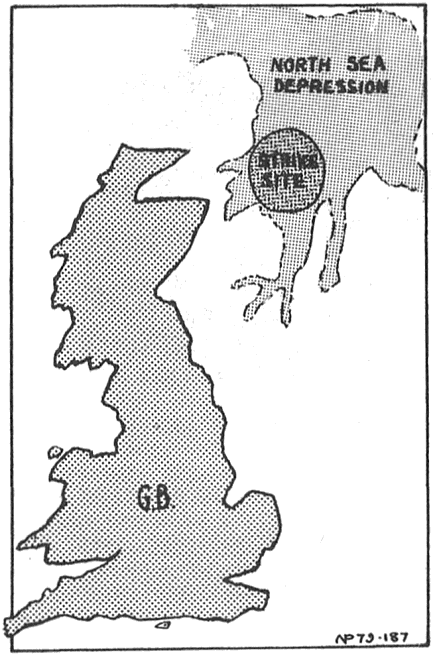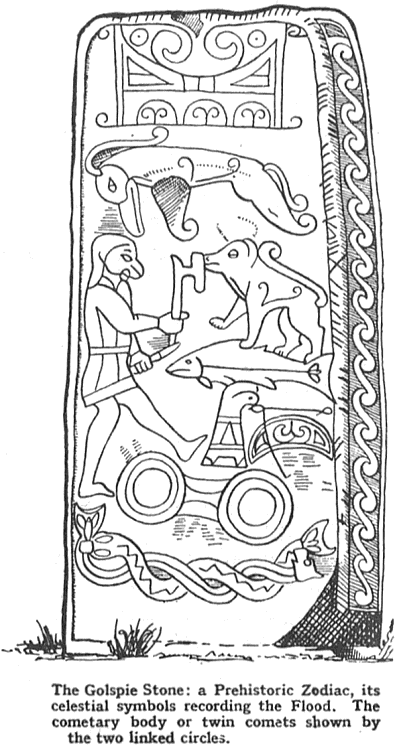
Journal of Geomancy vol. 3 no. 3, April 1979
{59}

The maximum bombardment of the planetary system by internal debris took place between 3 and 4 billion years ago, and has subsequently tailed off to the occasional transient flash of a micro meteorite, and the arrival on the surface of the earth of a comparatively low-speed fragment which survives transit through the atmosphere.
The exception to this low frequency of collision with large bodies in recent times was the well-known aerial explosion of 1908 over the taiga wastes of Siberia. This even became a mystery due to lack of data, and solutions have varied from the destruction in flight of an alien space vehicle, to collision with an antimatter comet.
The latest developments have borne out the assessment made by the author in 1976 which proposed that the Tungus bolide was indeed cometary debris, which having entered the atmosphere at 42 K. sec., exploded due to high pressure and temperature caused by a hypersonic ram effect, and resulted in the formation of a natural fusion device.
This deduction was arrived at following investigation of two natural disasters quoted in Stonehenge Decoded by G.S. Hawkins. The first laid the land waste for thirty years and “buried the Partholonians, perhaps a volcanic eruption. The second caused a great wave …” from the sea, and drowned the Nemedians who came from Greece. After this disaster the land was desert for the space of two hundred years. Allowing for some exaggeration this is still a considerable period and worthy of examination.
There is a line of extinct volcanoes which stretches from Wales through Scotland to Norway. Arthur’s Seat in Edinburgh is perhaps the best known, however, though these have been extinct for too long to be considered. There is a gap in the line where a volcano could have existed, and that is the North Sea, the site of the legendary maelstrom or whirlpool, the Horrenda Charybdis.
Examination of this area revealed a large fairly circular depression with several major fissures radiating from the periphery, similar in outline to Hudson Bay, which is believed to be a crater of meteoric origin due to the fact that the arcuate shoreline of the Nastapoka Arc shows evidence of a disturbance consistent with formation by blast.
The radial arrangement of fissures most prominently displayed by Hudson Bay is matched by the distribution of fault lines from the mainland of Scotland, which have all been traced out to sea, and radiate from the periphery of the depression. This is particularly noticeable in the case of the fissures known as the Devil’s Hole, which duplicate the wider rupture to the south of Hudson Bay.

There is also mention of vitrification on NE facing slopes in Scotland, and cases of uprooted tree stumps near Cromer in Norfolk, which is directly south of the depression. According to H. Godwin “a general transgression of {60} the sea” took place in the period between the Neolithic and Roman periods of Britain, of the Fens. Also, in the Neolithic period “the forest trees, which were mostly Oak, fell to the NW”. Finally, a severe drop in temperature, or Klimasturtz, took place.
There are thus many common features which indicate the North Sea depression could be an aerial blast crater formed in a similar manner to the Hudson Bay, and by the same agent which caused the Tungus fireball.
With the acceptance of an aerial detonation of cometary debris as an agency for the formation of terrestrial craters, the eschatological connotations of comets may be more clearly understood. Both the Elgin and Golspie stones situated near the Moray Firth in Scotland show the “spectacles”, or supposed twin comet, together with more than a chance representation of a cometary head. Rather than being a twin comet the spectacles are more likely to be a divided nucleus connected by filaments of gas, part of which was later in collision with the earth, and detonated over the North Sea forming the depression, and causing the radial fissures.